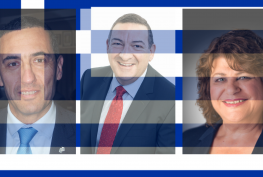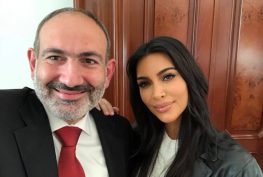by Maxime Gauin
On January 28, the hearing of the Perinçek v. Switzerland case will take place in front of the Grand Chamber of the European Court of Human Rights. This is one of the most important cases regarding the freedom of expression in Europe during the last decades.
In short, the story is the following. In 1995, Switzerland adopted a law (integrated in the criminal code as Article 261 bis) banning the expression of racism, as well as the negation, the justification or the “crude minimization” of genocide (without precise references to what exactly must be called “genocide”). Six years later, the Switzerland-Armenia Association—ASA, created in 1992 by James Karnusian, the very same man who established, in early 1970s, the Armenian Secret Army for the Liberation (ASALA), an anti-Turkish, anti-Semitic, anti-French terrorist organization—began its attempts to misuse this Swiss anti-denial law, suing some persons who had “denied” the accusations of “Armenian genocide.” The ASA failed twice, but won in 2007 against Doğu Perinçek, a controversial Turkish politician who had stated in Switzerland: “Armenian genocide is an imperialist lie.” Mr. Perinçek filed an application to the European Court of Human Rights and the Court found him right, ruling that Switzerland had violated his freedom of expression. Unable to admit its fault and violating its promises made to Ankara, Switzerland filed an application to the Grand Chamber.
I have already explained, in my previous blog, why the “Armenian genocide” label is not supported by any evidence and why there were actually inexcusable crimes from both sides. Since nobody presented any argument to prove me wrong, I will not go back to this aspect of the litigation. As they did in 2012, during the affair of the Boyer bill in France (a liberticidal law censored by the French Constitutional Council), Armenian propagandists are trying to link Mr. Perinçek’s provocative speech to Holocaust denial. These attempts would be very dangerous if significant Jewish organizations backed them. Fortunately, this is not the case for that moment, but if not answered, this propaganda could become effective.
The European Court of Human Rights made a clear, articulate and well-substantiated distinction:
In any event, it is even doubtful that there could be a “general consensus”, in particular a scientific one, on events such as those that are in question here, given that historical research is by definition open to debate and discussion and hardly lends itself to definitive conclusions or objective and absolute truths (see, in this sense, judgment no. 235/2007 of the Spanish constitutional court, paragraphs 38-40 above). In this regard, the present case is clearly distinct from cases bearing on denial of the Holocaust crimes (see, for example, the case of Robert Faurisson v. France, brought by the UN Human Rights Committee on 8 November 1996, Communication no. 550/1993, Doc. CCPR/C/58/D/550/1993 (1996)). Firstly, the applicants in these cases had not only contested the simple legal description of a crime, but denied historic facts, sometimes very concrete ones, for example the existence of gas chambers. Secondly, the sentences for crimes committed by the Nazi regime, of which these persons deny the existence, had a clear legal basis, i.e. Article 6, paragraph c), of the Statutes of the International Military Tribunal (in Nuremberg), attached to the London Agreement of 8 August 1945 (paragraph 19 above). Thirdly, the historic facts called into question by the interested parties had been judged to be clearly established by an international jurisdiction.
Indeed, the Gayssot Act in France, for example, does not include the words “Jews” and “genocide,” but penalizes the contestation of the existence of crimes against humanity perpetrated during the Second World War and judged by the International tribunal of Nuremberg or by a French court. As observed the European Court of Human Rights, there is no judgment “by an international jurisdiction” that could be used to prove the “Armenian genocide” allegations. On the contrary, the only attempt of such a tribunal, in Malta, totally failed, the prosecutor and his staff having found, after more than two years (1919-1921) of investigation no evidence against any of the 144 former Ottoman dignitaries who had been arrested and interned by the British army.
Another kind of amalgam, in the same vein, is to pretend that Mr. Perinçek promotes an “anti-Armenianism,” not unlike the Holocaust-deniers promote anti-Semitism. This amalgam often includes conspiracy theories on an alleged “denial industry” from the “evil” Turkish state. To be clear, I would never vote for Mr. Perinçek’s party (the Workers’ Party) if I was a Turkish citizen, and this is not a secret. However, whatever you think about Mr. Perinçek, nobody can honestly pretend that his statements in Switzerland, or in any other place, have anything to do with racism. Indeed, he said—he always said—“an imperialist lie,” not “a lie spread by the Armenians.” Even if this explanation by imperialism only is somewhat simplistic, like any other declaration from a politician following a political agenda, it is true that the “Armenian genocide” accusations have roots in imperialism—and their more unsophisticated forms also have something to with anti-Semitism, because of the century-old slander on a “Jewish-Masonic plot” behind the Committee Union and Progress, the party in power in the Ottoman Empire from 1913 to 1918.
Correspondingly, it is false to pretend that the Turkish government denies the very existence of inexcusable crimes against civilian Armenians during the First World War. In the classical book of the Turkish historiography on the subject, Kâmuran Gürün, who was the general secretary of the Turkish ministry of Foreign affairs when he was writing this study, explained:
“A murder is a murder, no excuse can be given. Just as we do not condone the fact that Armenians massacred Turks, we do not condone the fact that Turks massacred Armenians. However, the Armenians who were massacred were not massacred on the orders of the Government. As we have stated above, the culprits who were arrested were sent to the courts, were given sentences, including the death sentence, and the sentences were carried out.” (Kâmuran Gürün, Le Dossier arménien, Paris: Triangle, 1984, p. 265).
Even more clearly, if possible, on April 23, 2014, Prime Minister (now President) Recep Tayyip Erdoğan stated: “And it is with this hope and belief that we wish that the Armenians who lost their lives in the context of the early twentieth century rest in peace, and we convey our condolences to their grandchildren.” However, the Muslim Azeris and the Mountain Jews, who have been methodically eliminated by the armed forces of independent Armenia from 1918 to 1920, are still waiting for the condolences of President Serge Sarkissian. They will certainly wait long, because Mr. Sarkissian, himself an Armenian from Azerbaijan, was a top leader of the Armenian aggression against its Azerbaijani neighbor, in the 1990s. The whole non-Armenian population of the occupied territories was expelled, when not butchered. All these operations of ethnic cleansing are glorified in the official speech of Armenia, and called “Armenization.”
The cleverest kind of amalgam is to pretend: Mr. Perinçek may be not racist, but his speech incites to racism in practice. However, this allegation does not resist to examination of the facts. The Swiss citizens of Armenian origin were never subjected to any act of violence by Turks and Swiss citizens of Turkish origin; however, the population of Turkish heritage in Switzerland was targeted as such by Armenian terrorists during the 1970s and 1980s, and more recently, during the 1990s and 2000s, by the Kurdish terrorists (PKK), themselves warmly supported by the extremist elements of the Armenian diaspora all over the world.
In fact, the real racism in this dispute is the racism of Armenian nationalists against the Turks. Let see, for example, what Laurent Leylekian, the top lobbyist of the Armenian Revolutionary Federation (ARF, main party of the Armenian diaspora) in Europe from 2000 to 2009, wrote in October 2009, on a web site closed down in February 2011:
Yes, bloody Turks are guilty. No matter what their good will, purposes or activities are, they are all guilty. From the newborn baby [sic] to the elderly about to die, from Islamist to Kemalist, from those coming from Sivas to Konya, from the religious to the atheist… they are all guilty. As irretrievably guilty as Cain [sic], towards Armenians, towards themselves, towards history and towards humanity—they are all guilty.
Quite interestingly, Mr. Leylekian’s openly racist article used a vocabulary (“As irretrievably guilty as Cain”) also present in statements made by Julius Streicher, the most extreme Nazi propagandist. For another editorial, Mr. Leylekian was sentenced for defamation against a French citizen of Turkish origin, and, quite remarkably, after this court decision, he dared to retweet a crude anti-Semitic cartoon, deleting the retweet only after I exposed this dissemination of hate. Considering that Mr. Leyekian’s party, the ARF, collaborated with the Nazis for ideological reasons (“Aryan fraternity”, totalitarian conception of the state, anti-Semitism) and is still today immensely proud of its past leaders (such as Dro and Nejdeh) who were Nazi war criminals, there is no reason to be surprised.
In conclusion, no matter what you think about Doğu Perinçek, about his political views, about his appreciation of the First World War, his statements remained in the limits of the freedom of speech and have simply nothing to do with the anti-Jewish propaganda of the Holocaust deniers—racism is on the other side. The full confirmation of the European Court of Human Rights’ decision is the most desirable result of this case.



